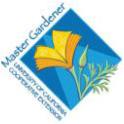Fall 2023
-
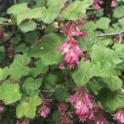
Plant Native Shrubs Now for Winter and Spring Bloom
by Laurinda Ochoa
Fall is the ideal time to plant California natives and other Mediterranean plants that grow with our winter rains and bloom in late winter and spring. Planting now gives the roots of these plants time to grow into the soil and become established before the high temperatures and dry climate of our summers.
Shrubs are multi-branched plants that are smaller than trees and larger than bushes. Shrubs are long-lived perennial woody plants that can be either evergreen or deciduous (lose their leaves). Although not as long-lived as multi-century-old trees, most native shrubs can live for decades both in nature and in our gardens, compared to commercial, hybridized, and non-native shrubs, which generally need to be replaced more frequently than native shrubs.
-
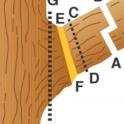
Pruning to Control Growth
by Anne Sutherland
Pruning during dormancy invigorates trees. Pruning when a tree is leafed out in summer and fall will reduce the next season’s growth and is the best way to reduce its size. Removing leaves decreases the energy the tree receives from the sun, energy that the tree uses to manufacture fruit and for its own nourishment. Therefore, summer pruning is best done after fruit harvest or after flowering if it’s a landscape tree or shrub. Summer pruning refines the structure you build during dormancy.
-
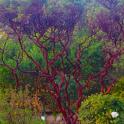
Aesthetic Pruning: Taking pruning a step further
by Hedwig Van Den Broeck
There is something magical about strolling through nature, where fauna and flora thrive without human interference. Our California natives - whether groundcovers, shrubs, or trees - just appear to be having a great time doing what they do best: growing effortlessly.
Even though I’ve always been more interested in natural gardening, it wasn’t until a beautiful young Madrone tree, Arbutus menziesii, in my garden was hit by a huge Oak limb that fell and ‘topped’ the Madrone that I became interested in aesthetic pruning. Not only was the damaged tree a hideous sight, but it also seemed unlikely that this beautiful tree would recuperate. I was, however, determined to find a solution.
-
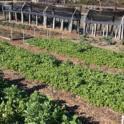
A Season in Review
by Janet Miller
The end of the main growing season is approaching, and what a season it has been, both at the Walnut Creek demonstrating garden, ‘Our Garden’ ) and in our own gardens. In comparison with other winters in our part of the country, this winter was particularly long, wet, and, cold. Here in the Bay Area, we saw record-breaking amounts of rainfall, heavy winds, overcast skies, and unusually cold weather that lasted at least a month longer than usual. All of which spelled trouble for farmers and backyard growers alike. The cold spell meant the soil didn’t warm as quickly as it should have and overcast skies minimized photosynthesis, keeping seedlings small and, in some cases, permanently stunted.
-
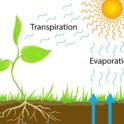
Try These Strategies to Use Less and Store More Water
by Lori Palmquist
It’s September, and the leaves are turning color, detaching, and floating to the Earth to form a mantle that feeds and shelters the soil and the resident soil organisms.
It’s Best to Ramp Back Watering August-December
Nature is signaling to us that it’s time to ramp back on our irrigation schedules. Although we may be experiencing 100 degree days, the amount of water the plants require is diminishing day by day. As we edge further away from the summer solstice and creep toward the winter one, the days are shorter and shorter. So, how does this relate to ramping back on our schedules?
-
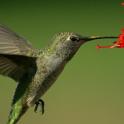
Winter Gardens for the Birds!
by Lorraine Frey
Believe it or not, summer will soon be coming to an end. It’s therefore time to think about the fall garden and the birds we want to see and protect through the winter First, we need to re-think fall "Cleanup".
In the garden, tolerance and aesthetic preferences vary from person to person. So, if you aren't quite ready to go 100% “au naturel” this fall, then start with just a few of the following ecosystem-boosting recommendations—you'll be surprised just how beautiful a "messy" lawn and garden can be.
-
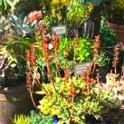
Small Spaces Gardening: Growing Succulents in Containers
by David George
Succulents are popular patio container or indoor plants in Contra Costa County. Many are easy to grow in shady or dry conditions, which often challenge other container plants. Over 10,000 plant species in the world are considered succulents, and thrive in diverse climates such as humid coastal zones, hot deserts, and cold Alpine regions. They comprise about 3% of the world’s flowering plants and boast unusual leaf shapes and colors. And they are lovely when grouped together as accents on your patio or deck. Are you ready to grow your own succulent container garden? Let’s get started!
-
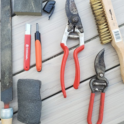
Be Kind to Your Tools to Be Kind to Your Plants
by Cynthia Engers
It’s easy to take our trusted garden tools for granted, but sometimes they, too, need care and attention. And that care entails cleaning, sharpening, and disinfecting.
Ideally, cleaning—removing dirt and wiping or scrubbing off plant residue—is a regular task during the planting and pruning season. Water and/or household cleaners, along with an abrasive helper, such as steel wool or a wire brush, should do the trick.

